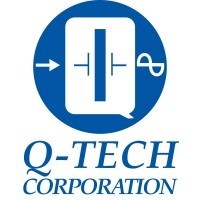Electronics circuits miniaturization
- Home
- /
- POSTS
- /
- Components
- /
- Electronics circuits miniaturization
Conventional electronics are traditionally made from bulk materials. However, the trend of miniaturization in electronics has forced the feature sizes of the electronic components to shrink accordingly.
The ultimate goal of electrical circuits is miniaturization, is a branch of nanotechnology that uses single molecules or collections of single molecules as electronic building blocks. In single-molecule electronics, the bulk material is replaced by single molecules. The smaller size of the electronic components decreases power consumption while increasing the sensitivity (and sometimes performance) of the device.For the past four decades, the electronics industry has been driven by what is called “Moore’s Law,” which is not a law but more an axiom or observation. Effectively, it suggests that the electronic devices double in speed and capability about every two years. And indeed, every year tech companies come up with new, faster, smarter and better gadgets.
Specifically, Moore’s Law, as articulated by Intel co-founder Gordon Moore, is that “The number of transistors incorporated in a chip will approximately double every 24 months.” Transistors, tiny electrical switches, are the fundamental unit that drives all the electronic gadgets we can think of. As they get smaller, they also electricity to operate.
In the technology world, one of the biggest questions of the 21st century is: How small can we make transistors? If there is a limit to how tiny they can get, we might reach a point at which we can no longer continue to make smaller, more powerful, more efficient devices.
Electronic design (ED/EDA)
Components are no longer created without computer-supported development tools. The necessary EDA software provides the foundation for developing other innovations in electrical engineering.
Automotive
The automotive industry is looking for new growth opportunities by improving vehicle performance. Increasingly strict legal regulations are one reason for this trend. Add to that a leap in technology: New lightweight materials, miniaturization as well as digitalization and networking are making automotive electronics a rapidly growing market.
Displays
A technology that makes its mark on our everyday lives: Whether in smartphones, so-called wearables or driver-assistance systems, displays are now used in a large number of applications. The demands they must meet are correspondingly diverse. For example, displays must be particularly sturdy in the industrial sector, but what counts in medicine is high resolution. And flexible displays are gaining ground in portable products.
Electromechanics and system periphery
Whether it comes to switches, plug-in connectors or relays—this sector at electronica unites all the areas that deal with connections that conduct electricity. The topic of EMC (electromagnetic compatibility) also plays an important role here. This sector also has great deal of space devoted to casing technology. After all, a variety of housings are needed to effectively protect electronic components and PCBs from external influences.
Hybrid components
Manufacturing hybrid components has been one of the topics covered at electronica since 2014. Most of the companies in this sector present PCBs and other circuit carriers as well as EMS (Electronic Manufacturing Services).
Embedded systems
Embedded systems are omnipresent: For instance, washing machines and refrigerators now also feature microprocessors and related software just like telephones, model trains and automobiles. They are just as much a matter of course in our professional lives as they are in our private lives.
Semiconductors
The advent of affordable computers and integrated circuits has changed modern society. Today, integrated circuits are used in practically every electronic device, and they have revolutionized the world of electronics.
Power semiconductors
Microprocessors
Diodes
Transistors









